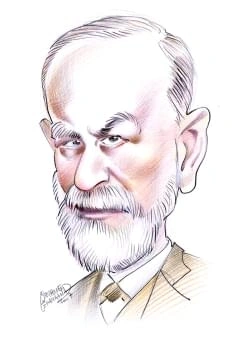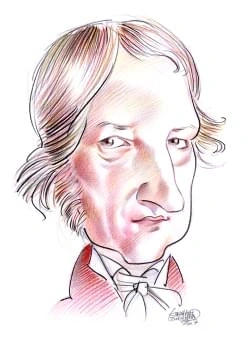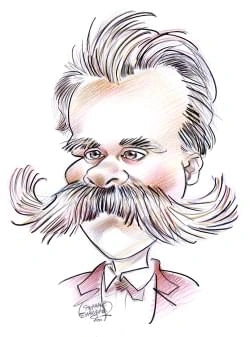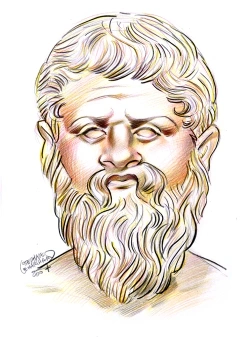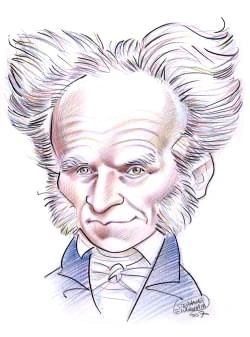452 résultats pour "british"
- Baldwin, Stanley
- Sir Louis-Hippolyte LaFontaine - Canadian History.
- Greece, invasion of
- Gazala, Battle of
- Great Britain
- Irish famine
-
Le Concorde (Sciences & Techniques)
Le Concorde La Seconde Guerr e mon diale a vu l 'avènement des c h asse urs supersoniqu es. A u ssi, l'idée d'un avion civil v olan t à plus de M ach 1 fit-elle lentement son chemin dan s les bureaux d'études , en Fran ce et au Ro yaume- U ni. I l faudra néanmoins attendre 1956 avant que le gouvernement britannique , qui avait conclu un accord de collaboration avec la compagnie aéronautique anglaise BOAC, fonde un comité consultat...
- Royal Proclamation of 1763 - Canadian History.
-
- Cecil Rhodes.
-
Henry Morton Stanley.
VI EVALUATION If Stanley was among the most ruthless and driven of Europe’s African explorers, he also was among the most accomplished. Much of what the Western world came toknow about Central Africa, including the drainage of its lakes and rivers, was derived from Stanley’s explorations. Moreover, he was one of the central figures in eventsleading to the Scramble for Africa. His call for the Christianizing of Africans and for the development of commerce with the interior echoed the call Livin...
-
Henry Morton Stanley - explorer.
VI EVALUATION If Stanley was among the most ruthless and driven of Europe’s African explorers, he also was among the most accomplished. Much of what the Western world came toknow about Central Africa, including the drainage of its lakes and rivers, was derived from Stanley’s explorations. Moreover, he was one of the central figures in eventsleading to the Scramble for Africa. His call for the Christianizing of Africans and for the development of commerce with the interior echoed the call Livin...
- Boston Tea Party - U.
-
Scramble for Africa.
additional territorial grabs. The most significant of these rules stated that colonial powers were obligated to notify each other when they claimed African territory.Further, subsequent “effective occupation” of the claimed area was necessary for the claim to remain valid. Through it all, as Europeans negotiated their rights toAfrican territory, not a single African was present. Once the conference was over, it was clear that a European Scramble for African territories was underway. Southern Afr...
-
Arab-Israeli Conflict - history.
Arab-Israeli War of 1948-1949As early as April 1948 the newly independent nation of Israel put into effect Plan Dalet, which called for the expulsion of PalestinianArabs from areas allotted to the Palestinians under the United Nations (UN) partition plan. The combined forces of several Arabnations and Palestinian guerrillas attacked the Israelis. Israel defeated the Arab forces between 1948 and 1949, taking much of theland that had been granted to the Palestinians by the UN in 1947. Unresolved t...
-
Whitehorse - geography.
The city of Whitehorse is governed by a council made up of the mayor and six members who act as the legislative body, and a city manager who acts as the executive. Allserve two-year terms. Yukon Territory is governed by a six-member executive council and a 17-member territorial legislature. A territorial commissioner serves a role similar to that of thelieutenant governor in Canadian provinces. VI CONTEMPORARY ISSUES Air pollution is a concern in Whitehorse. The city council is considering disc...
- airborne assault
-
-
Ireland - country.
F Plants and Animals Ireland’s animal life does not differ markedly from that of England or France. Over many centuries of human settlement almost all of Ireland’s natural woodlands werecleared, and indigenous animals such as bear, wolf, wildcat, beaver, wild cattle, and the giant Irish deer (a type of fallow deer) gradually disappeared. However, thehardy and versatile Connemara pony, Ireland’s only native pony breed, has been used by Irish farmers since prehistoric times. The great auk, or gar...
- Francis Crick.
-
Botswana - country.
at birth was 50.2 years, also a significant improvement. The urban population of Botswana has increased rapidly, from 18 percent of the total in 1981 to 51 percent in 2003. Gaborone, the capital, is the largest city and mainbusiness center. Other business centers are Francistown, Selebi-Pikwe, Molepolole, Kanye, and Serowe. Botswana received its name from the country’s principal ethnic group, the Tswana. Other ethnic groups include the Kgalagadi, Kalanga, and Basarwa. There are also asmall numbe...
-
Piranèse - dessin & gravure.
Piranèse, Prisons imaginaires La série d'estampes aux accents fantastiques qu'a réalisé Piranèse sur le thème des prisons a donné lieu à deux éditions, en 1745 et en 1760. L'imagination de l'artiste, nourrie par l'étude desmonuments antiques, atteint son paroxysme dans la description de ces univers labyrinthiques où l'homme est écrasé par des architectures demesurées.Piranèse, Prisons imaginaires, estampeextraite de la série des seize Invenzioni Caprici di Carceri. British Museum, Londres.Bridge...
-
Ghana - country.
times of depressed cacao prices, Ghana has significantly increased exports of timber to generate needed revenue. In 1988 Ghana initiated a conservation plan called the Forest Resource Management Project. In 1989 Ghana restricted the export of 18 tree species, and in 1994 thecountry banned the export of raw logs. About 4.8 percent (1997) of the country’s land is officially protected, but illegal logging threatens Ghana’s remaining forests. Deforestation, overgrazing, and periodic drought have led...
-
bibliothèque - encyclopédie.
Bibliothèque nationale Bibliothèque nationale de France (BNF) Bodley (sir Thomas) Borges Jorge Luis Borromée Frédéric British Museum Budé Guillaume Callimaque Cambridge Centre national d'art et de culture Georges-Pompidou (CNAC Georges-Pompidou) Chigi classification décimale universelle (CDU) Corsini Cujas Jacques dépôt légal Dewey Melvil Escurial (l') Etsin Gol Eumène Euphorion Harvard (université) Kahn Louis Isadore Labrouste Henri Laurentienne (bibliothèque) Le Roy Lad...
-
Cyprus - country.
40,000 cubic meters (1.4 million cubic feet) of salt water into fresh water per day, opened at Dhekelia in 1997, and a second larger plant opened at Larnaca in 2001. III PEOPLE OF CYPRUS The combined population of the Greek and Turkish sectors (2008 estimate) is 792,604. The overall population density is 86 persons per sq km (222 per sq mi). About69 percent of the island’s inhabitants live in urban areas. Greek-speaking Cypriots make up approximately 85 percent of the population. About 12 perc...
-
Prince Edward Island - Geography.
hectares (109 acres) each. In 2006 there were 1,700 farms, of which the average size was 148 hectares (366 acres). In 2005 the total farm cash receipts were C$510million. The most important agricultural products in terms of value include potatoes, milk and cream, cattle and calves, hogs, tobacco, vegetables, eggs, hens andchickens, and furs. For the most part the island’s agriculture is diversified, rather than specialized, because of the lack of a large urban industrial population within easy r...
-
-
Prince Edward Island - Canadian History.
hectares (109 acres) each. In 2006 there were 1,700 farms, of which the average size was 148 hectares (366 acres). In 2005 the total farm cash receipts were C$510million. The most important agricultural products in terms of value include potatoes, milk and cream, cattle and calves, hogs, tobacco, vegetables, eggs, hens andchickens, and furs. For the most part the island’s agriculture is diversified, rather than specialized, because of the lack of a large urban industrial population within easy r...
-
Nova Scotia - Geography.
summer. Nova Scotia receives an average of more than 1,140 mm (45 in) of rain annually, with the Atlantic shore receiving 1,400 mm (55 in) or more. Most of the provincereceives about 1,900 mm (about 70 in) of snow, and considerable winter precipitation comes in the form of rain or ice storms. The average temperature in January, thecoldest month, is generally about -4°C (about 25°F) near the coast and somewhat colder toward the interior. The average temperature in July, the hottest month, isabout...
-
Nova Scotia - Canadian History.
summer. Nova Scotia receives an average of more than 1,140 mm (45 in) of rain annually, with the Atlantic shore receiving 1,400 mm (55 in) or more. Most of the provincereceives about 1,900 mm (about 70 in) of snow, and considerable winter precipitation comes in the form of rain or ice storms. The average temperature in January, thecoldest month, is generally about -4°C (about 25°F) near the coast and somewhat colder toward the interior. The average temperature in July, the hottest month, isabout...
-
Egypt - country.
Egypt has a wide variety of mineral deposits, some of which, such as gold and red granite, have been exploited since ancient times. The chief mineral resource ofcontemporary value is petroleum, found mainly in the Red Sea coastal region, at Al ‘Alamayn (El ‘Alamein) on the Mediterranean, and on the Sinai Peninsula. Otherminerals include phosphates, manganese, iron ore, and uranium. Natural gas is also extracted. D Plants and Animals The vegetation of Egypt is confined largely to the Nile Delta,...
-
History of Colonial America - U.
Despite the lack of settlement, New France prospered as a vast fur-trading enterprise. French explorers traveled deep into the North American continent seeking newsupplies of deerskins and beaver pelts. In 1673 French missionary Jacques Marquette reached the Mississippi River in present-day Wisconsin. In 1681 explorer René-Robert Cavelier, Sieur de La Salle, traveled down the majestic Mississippi to the Gulf of Mexico. He honored the reign of King Louis XIV (1643-1715) by creating the newcolony...
-
India - country.
delta in the north, are intensely farmed. B Rivers and Lakes The rivers of India can be divided into three groups: the great Himalayan rivers of the north, the westward-flowing rivers of central India, and the eastward-flowingrivers of the Deccan Plateau and the rest of peninsular India. Only small portions of India’s rivers are navigable because of silting and the wide seasonal variation inwater flow (due to the monsoon climate). Water transport is thus of little importance in India. Barrages,...
-
New Brunswick - Geography.
Grand Lake, the largest lake in New Brunswick, is in the lowlands, east of Fredericton. Most other lakes are located in the northern and southwestern parts of NewBrunswick. D Climate New Brunswick has a continental climate that is moderated by maritime influences in the coastal areas. As a result, coastal regions are slightly warmer in the winter andslightly cooler in the summer than are interior regions. Annual temperature variations are large, with the January mean usually at least 25 to 28°C...
-
New Brunswick - Canadian History.
Grand Lake, the largest lake in New Brunswick, is in the lowlands, east of Fredericton. Most other lakes are located in the northern and southwestern parts of NewBrunswick. D Climate New Brunswick has a continental climate that is moderated by maritime influences in the coastal areas. As a result, coastal regions are slightly warmer in the winter andslightly cooler in the summer than are interior regions. Annual temperature variations are large, with the January mean usually at least 25 to 28°C...
-
-
Ontario - Geography.
governed Ontario’s initial settlement and development. The province’s most important river is the St. Lawrence. Its route was much improved and enlarged by dredgingand canal building in the mid-20th century. This enabled large ocean-going vessels to reach Great Lake ports ( see St. Lawrence Seaway). The Ottawa River was an important early route to the interior for fur traders and timber merchants. The Niagara River, because of its falls, is a great center of hydroelectric power as well as aninte...
-
Ontario - Canadian History.
governed Ontario’s initial settlement and development. The province’s most important river is the St. Lawrence. Its route was much improved and enlarged by dredgingand canal building in the mid-20th century. This enabled large ocean-going vessels to reach Great Lake ports ( see St. Lawrence Seaway). The Ottawa River was an important early route to the interior for fur traders and timber merchants. The Niagara River, because of its falls, is a great center of hydroelectric power as well as aninte...
-
James Madison.
In the spring of 1784 Madison again ran for election to the Virginia assembly, and won. He served nearly three years there, pursuing the same objectives he had foughtfor in Congress. He advocated strengthening the federal government, which was an unpopular position in Virginia, as it was in most of the states. He consistentlysupported measures, at both state and national levels, that would best safeguard the rights of the individual. Madison also continued to oppose any connection betweenchurch...
-
James Madison
In the spring of 1784 Madison again ran for election to the Virginia assembly, and won. He served nearly three years there, pursuing the same objectives he had foughtfor in Congress. He advocated strengthening the federal government, which was an unpopular position in Virginia, as it was in most of the states. He consistentlysupported measures, at both state and national levels, that would best safeguard the rights of the individual. Madison also continued to oppose any connection betweenchurch...
-
James Madison - USA History.
In the spring of 1784 Madison again ran for election to the Virginia assembly, and won. He served nearly three years there, pursuing the same objectives he had foughtfor in Congress. He advocated strengthening the federal government, which was an unpopular position in Virginia, as it was in most of the states. He consistentlysupported measures, at both state and national levels, that would best safeguard the rights of the individual. Madison also continued to oppose any connection betweenchurch...
-
Arab-Israeli Conflict.
the Suez Canal and in 1951 blockaded the Strait of Tiran (Israel’s access to the Red Sea), which Israel regarded as an act of war. In June 1956 Egypt nationalized theSuez Canal, which had been jointly owned by Britain and France. In late October, Israel invaded the Gaza Strip and Sinai Peninsula, defeating Egyptian forces there.Britain and France attacked Egypt a few days later. Although the fighting was brief and Israel eventually withdrew from the Sinai and Gaza, the conflict furtherexacerbate...
-
Arab-Israeli Conflict - History.
the Suez Canal and in 1951 blockaded the Strait of Tiran (Israel’s access to the Red Sea), which Israel regarded as an act of war. In June 1956 Egypt nationalized theSuez Canal, which had been jointly owned by Britain and France. In late October, Israel invaded the Gaza Strip and Sinai Peninsula, defeating Egyptian forces there.Britain and France attacked Egypt a few days later. Although the fighting was brief and Israel eventually withdrew from the Sinai and Gaza, the conflict furtherexacerbate...
-
Native American Policy.
of white settlement dominated policy during the second quarter of the 19th century. IV REMOVAL PERIOD The idea of moving Native Americans to a different part of the country was not new. After the Louisiana Purchase in 1803, President Thomas Jefferson had suggestedthat tracts of land in this vast new territory could be given to native peoples if they agreed to cede their lands in the eastern part of the country. Transfers occurred in apiecemeal way, but no consistent removal program developed u...
-
-
Québec - Geography.
facilities. Tributaries south of the St. Lawrence include the Richelieu, the Saint-François, and the Chaudière rivers, which are only a few hundred kilometers long. TheRimouski and Matane rivers, also south of the St. Lawrence, are popular areas for recreation and salmon fishing. In the Canadian Shield, the longest rivers are theRupert, Eastmain, Grande Baleine, and La Grand-Rivière, which is the site of a huge hydroelectric complex. C Coastlines Québec has two systems of saltwater coastline. O...
-
Québec - Canadian History.
facilities. Tributaries south of the St. Lawrence include the Richelieu, the Saint-François, and the Chaudière rivers, which are only a few hundred kilometers long. TheRimouski and Matane rivers, also south of the St. Lawrence, are popular areas for recreation and salmon fishing. In the Canadian Shield, the longest rivers are theRupert, Eastmain, Grande Baleine, and La Grand-Rivière, which is the site of a huge hydroelectric complex. C Coastlines Québec has two systems of saltwater coastline. O...
-
Iraq - country.
The Euphrates begins in Turkey, crosses Syria, and enters Iraq at Abū Kam āl. The flow of the Euphrates into Iraq has been greatly reduced by dams built by Turkeyand Syria. The gradient of the Euphrates above the town of H īt, in west central Iraq, is steep. In the 2,640 km (1,640 mi) from its source in Turkey to H īt, the river fallsfrom 3,000 m (10,000 ft) to a low water elevation of 50 m (170 ft) above sea level, an average drop of 1 m per km (6 ft per mi). In Iraq below H īt the fall is very...
-
Somalia - country.
A Agriculture Livestock raising is the principal occupation in Somalia. The size of livestock herds began to recover in the mid-1990s after falling during the country’s civil war. Sheepand goats are the most numerous livestock, with smaller numbers of cattle. The principal crops grown are corn, sorghum, sugarcane, cassava, and bananas. B Forestry and Fishing While most wood is cut for fuel, Somalia’s major forestry export products before the 1990s were frankincense and myrrh. Fish is an import...
-
Ethiopia - country.
constitute about 6 percent of the population. The Somali, who live in the east and southeast, notably in the Ogadēn region, are about equal in number to the Shangalla.The Denakil inhabit the semidesert plains east of the highlands. The nonindigenous population includes Yemenis, Indians, Armenians, and Greeks. B Political Divisions Ethiopia is divided into nine regions composed of specific ethnic groups. The regions, which have a significant degree of autonomy, are Tigray; Afar; Amhara; Oromia;S...
-
Canadian Architecture
I
INTRODUCTION
L'Anse aux Meadows
In around ad 1000 Norse Vikings sailed from Greenland to North America and set up a village on the tip of what is now
the island of Newfoundland's Great Northern Peninsula.
IglooSome Inuit peoples in the Arctic regions of Canada live in domed houses of snow, or igloos, which provide good insulationand protection from wind. The word igloo comes from the Inuit iglu, meaning “house.”George Holton/Photo Researchers, Inc. Canada’s original inhabitants are known as the First Nations. At the time of European arrival, about 40 nations were scattered across Canada. Many of them lived alongthe coasts, where they could fish. These nations can be classified into five major gro...
-
Australia - country.
itself forms most of the border between New South Wales and Victoria. Considerable lengths of the Murray, Darling, and Murrumbidgee rivers are navigable during thewet seasons. The central plains region, also known as the Channel Country, is interlaced by a network of rivers. During the rainy season these rivers flood the low-lying countryside,but in dry months they become merely a series of water holes. The Victoria, Daly, and Roper rivers drain a section of the Northern Territory. In Queensland...
-
Australia - Geography.
itself forms most of the border between New South Wales and Victoria. Considerable lengths of the Murray, Darling, and Murrumbidgee rivers are navigable during thewet seasons. The central plains region, also known as the Channel Country, is interlaced by a network of rivers. During the rainy season these rivers flood the low-lying countryside,but in dry months they become merely a series of water holes. The Victoria, Daly, and Roper rivers drain a section of the Northern Territory. In Queensland...
-
-
South Africa - country.
The major soil zones are conditioned largely by climatic factors. In the semiarid north and west, soils are alkaline and poorly developed. In the southern part of WesternCape Province, rain falls mostly in the winter months, and soils there form slowly and are generally thin and immature. The moderate temperatures and summer rainfallof the High Veld and eastern coastal areas create conditions for more productive organic decomposition, leading to dark, fertile soils, or chernozems, similar to tho...
-
Michigan - geography.
The interior location of Michigan in the northern part of North America results in a continental climate, characterized by four definite seasons with moist, mild to hotsummers and snowy, cold winters. Winds off of Lakes Michigan and Superior in winter create heavy snow accumulations in nearby areas. The tempering effects of LakeMichigan account for the presence of the state’s famous fruit-growing belt along the lake’s shore. Since the water is colder than the land in spring, the westerly windspa...
}})
